Six years ago, I left my finance job. I was burnt out from working weekends and scarred from the brutal culture.
My dream back then?
To regain my freedom by escaping the corporate grind. I lusted for a six-figure remote job in tech. My dream scenario was to earn good money, work remotely and work less than 4 hours a day.
It took me three years to achieve all of this. Yet once I I got all that, I realised I wasn’t happy.
Let’s find out if I’m crazy.
The misguided dream
Whenever I tell friends about my average workday, they envy my job.
My day would start by opening my laptop, checking my nonexistent DMs and staring at my empty email inbox.
I’d then watch youtube, eat lunch and take a nap. Before wrapping up, I’ll make a few minor commits and comment on tickets to remind my colleagues of my existence. I had almost no meetings and my boss gave me autonomy over my day.
This might sound like a dream, but it’s not.
To illustrate how I felt, I want you to close your eyes and imagine you’re on your dream holiday.
Picture yourself relaxing on a beautiful beach in Bali, skiing in the Alps or spotting wild lions on safari in Kenya. It feels like an escape from the daily work grind, doesn’t it?
Now, imagine this: instead of enjoying this holiday for 3 weeks, you’re stuck on the same holiday for 3 years and you can’t do anything else. If you have ever been on a month long road trip, the wind-in-your-face freedom at the start eventually morphs into feeling homesick and being tired of travel at the end.
When a “holiday” stretches indefinitely, is the holiday now good or bad?
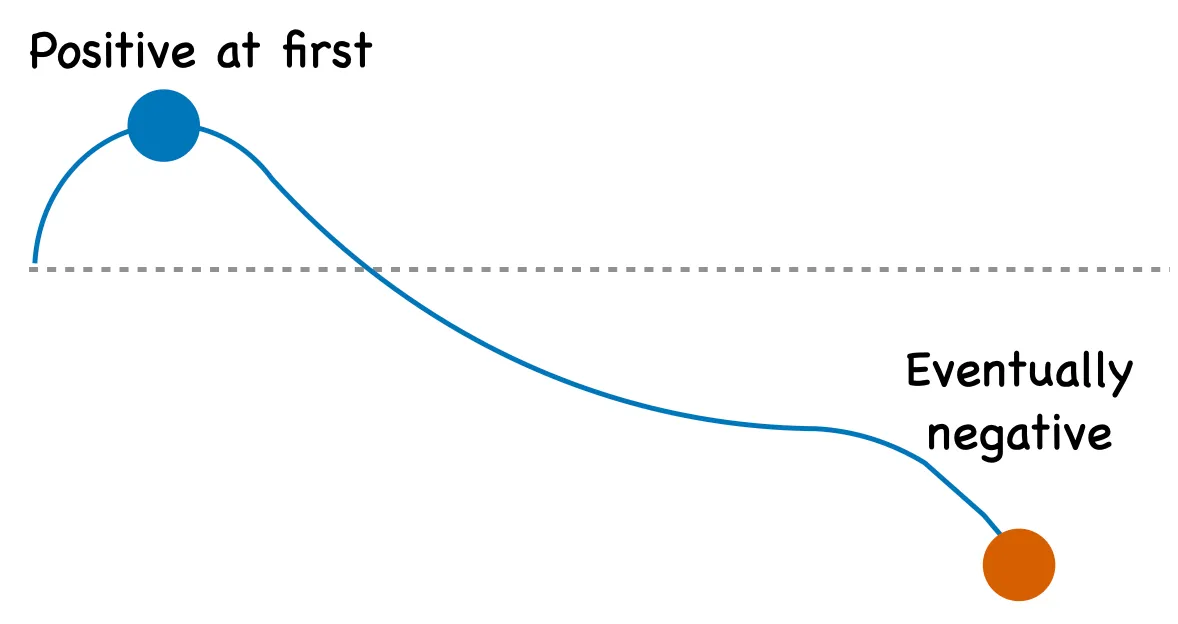
Is this a positive or negative experience?
This was how I felt working 10 hours a week with nothing meaningful to do. Great at first and dreadful in the long run. To better understand why this happens, let’s explore different stages of the career ladder.
Climbing the career ladder
I was working for money, but my priorities shifted as I accumulated savings.
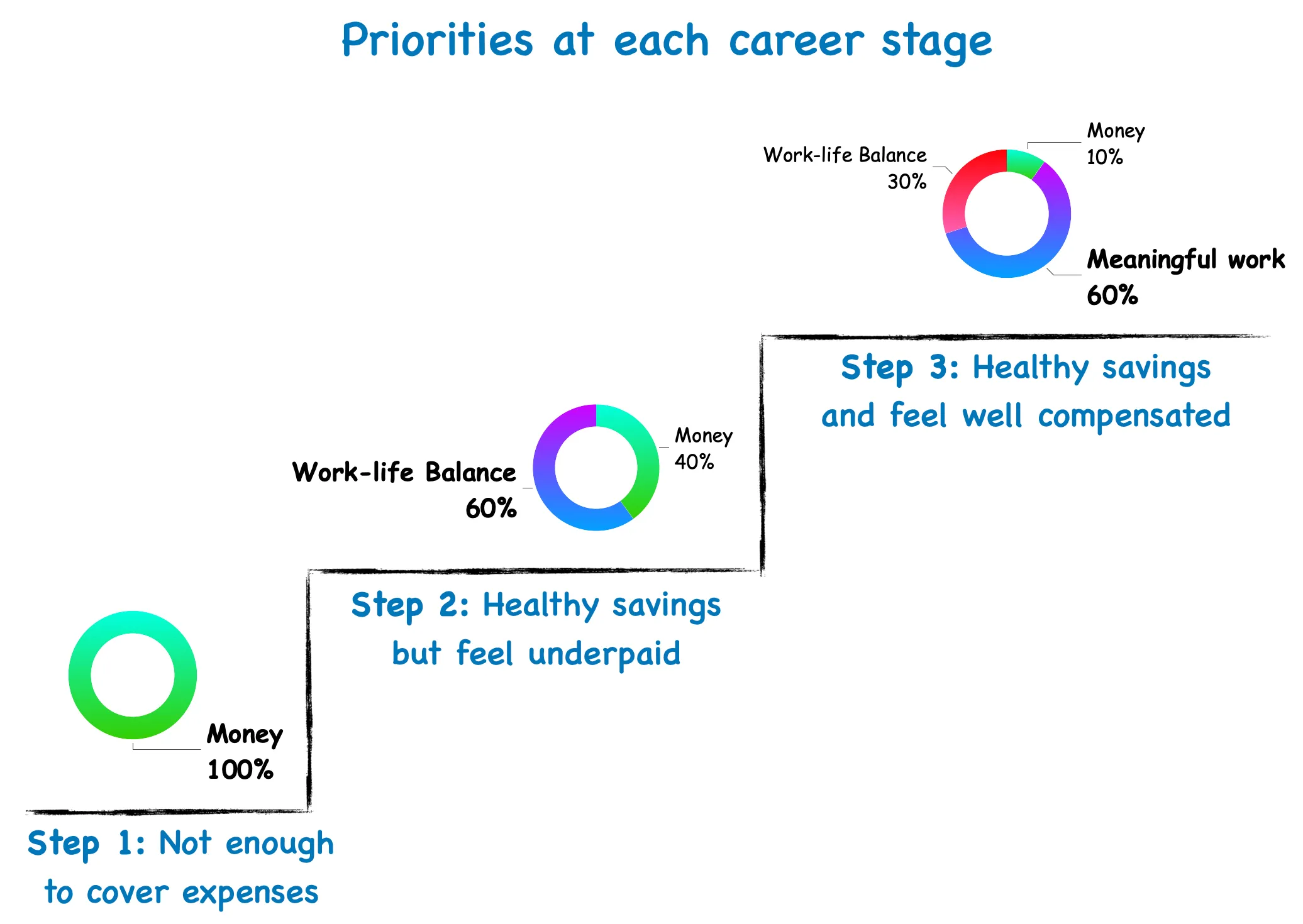
My priorities changed from working for food to eat (step 1) to seeking meaningful work (step 3). I was climbing Maslow’s hierarchy.
Progress from step 1 to 2 is straightforward; money is an external metric and easy to track. However, the leap from step 2 to 3 is deeply personal.
When I reached step 3, my earnings were similar to step 2 and I had not achieved FIRE. The key difference was overcoming a persistent fear of scarcity. It took me years to conquer this fear.
At step 3, I stayed in my job for the money but I was deeply dissatisfied. I felt like a small cog in a big machine.
I think many people (including me) feel trapped when they reach step 3 when meaning becomes a priority. Unlike money, meaning is an inner metric. We don’t say “I earned 100,000 meaning points this year” the way we do with money. So meaning is often undervalued, even when our heart tells us otherwise.
The Crossroads of Enough
Reaching step 3 is arriving at the Crossroad of Enough. There are four roads to choose from at the crossroads.
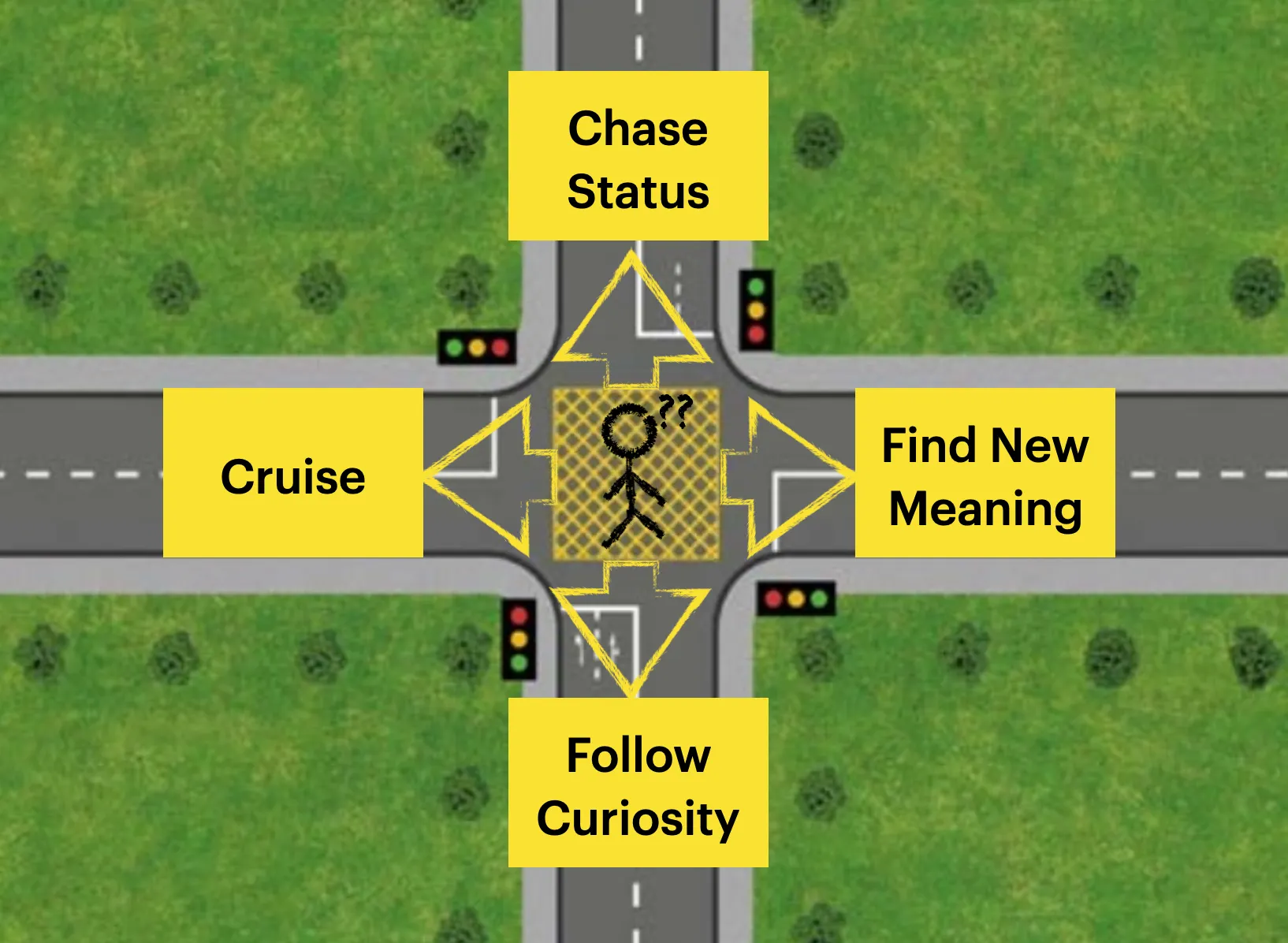
Turn left: Cruise
Cruising means being content with the status quo and letting life passively happen. I imagined working for another 30 years in a comfortable but unchallenging corporate job. This is how I see growth over time when cruising:
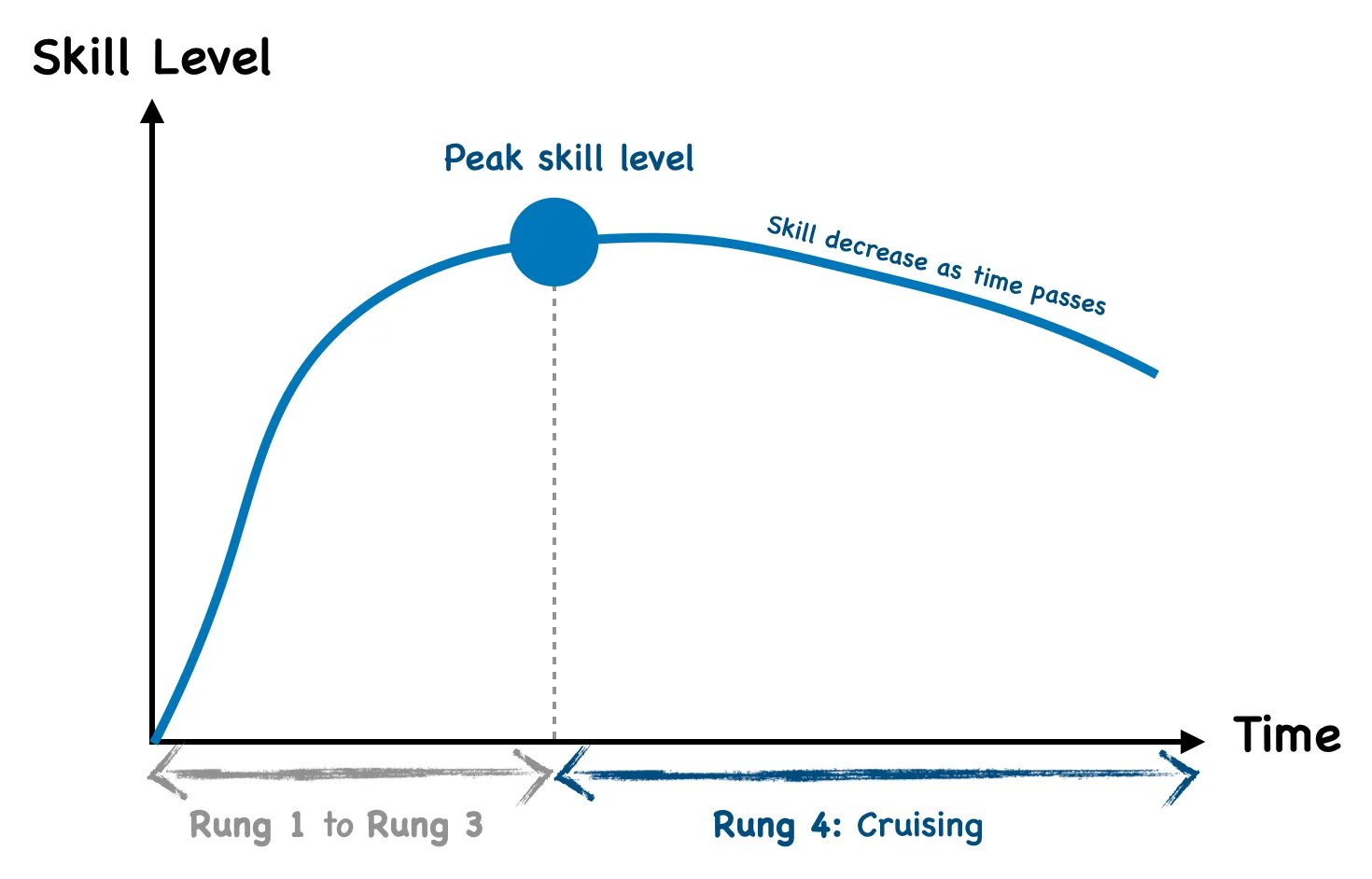
If you cruise, expect skills to atrophy over time
If I stayed, I knew I’d ask myself, “Where did life go?” after cruising for 30 years. I wanted to minimise regret, so cruising was not an option.
Go Up: Chase Status
Another option was to chase status in the corporate world. Status can take many forms, such as managing a larger team or earning a higher title.
For me, status meant accumulating more money. I could achieve this by pursuing promotions or seeking higher paying jobs.
But if I already had enough, chasing status is joining the rat race.
This youtube video perfectly illustrates the chase. The top comment sums it up:
“Every man is happy until happiness is suddenly a goal” - Tame Impala
Turn Right: Find New Meaning
Alternatively, I could find meaning outside of work.
I could tap out of the work game, quit my job, and make something other than work my focus. I could travel the world or start a family. However, I can’t do this indefinitely, as I’d be default dead without an income.
Shifting my priority away from work is challenging. Work has been a central part of my identity since I was young, and it’s where I’ve found meaning. Letting go of this identity and creating a new one feels daunting.
Head Down: Pursue Curiosity
The final option is to indulge in curiosity, which is the path I chose.
The term “curiosity” originates from the Latin word cūriōsus, which translates to “full of care.”
Curiosity involves a deep care for a problem, beyond what seems rational. A hallmark of curiosity is the more you dig, the more intrigued you become. It’s like tugging at a loose thread on a shirt, only to find it never stops unravelling.
I want curiosity to be both my guide and engine. Steering me toward problems worth solving and giving me the fuel to tackle them.
I believe that working on problems we’re curious about leads to a meaningful life. This is how I envision my life’s trajectory:
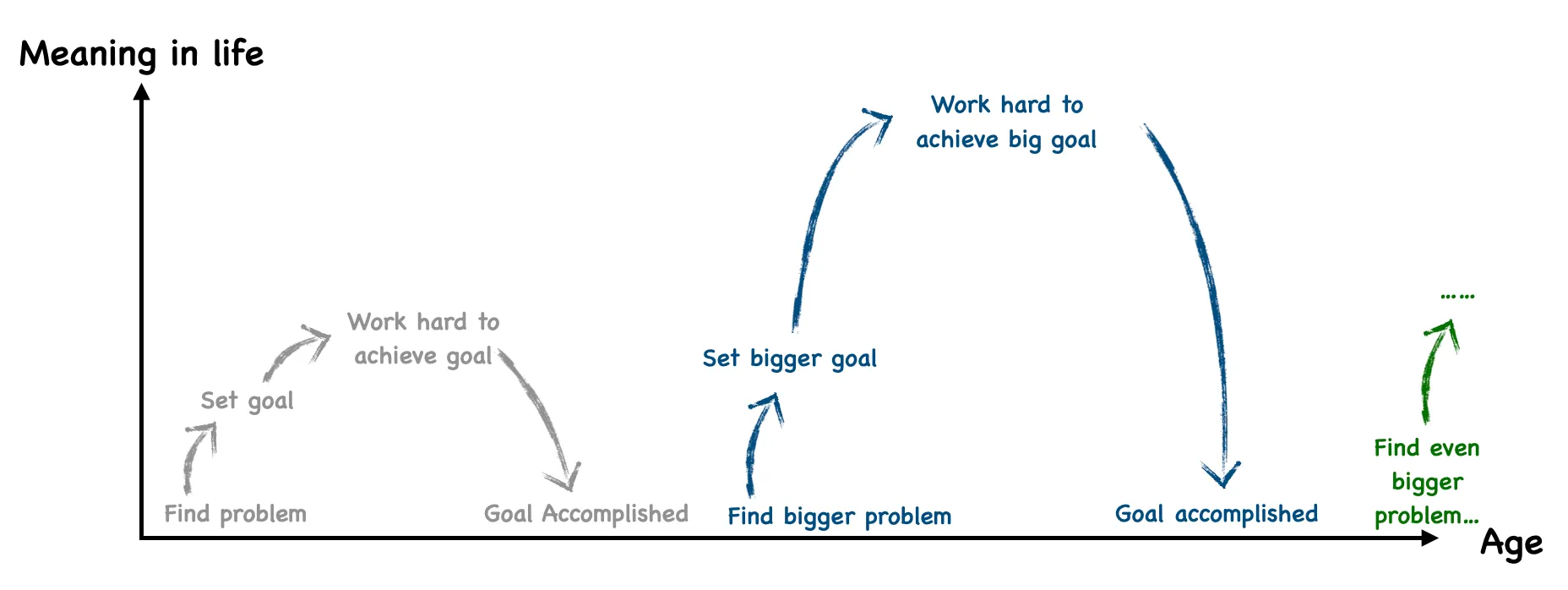
I derive meaning by finding big problems that I’m curious about
The enemy of curiosity
I had lost motivation at my job for over a year before I quit. My regret was not leaving earlier.
Fear
Fear is the enemy of curiosity. Its main goal is to transform curiosity into conformity. The trick is to make fear a speed bump instead of a roadblock.
Fear manifests in many forms, such as:
- Fear of judgment: We’re afraid to be judged by family and friends so we live a “normal” life. Stay within the lines they say.
- Fear of failure causes us avoid any project that has the potential of failing.
- Fear of scarcity manifests as being scared of not having enough resources (e.g. money) to survive, often overblown.
- Fear of success: Paradoxically, some fear success because they worry about losing it all after reaching the peak.
Desire
To take action, desire must outweigh fear. If you truly want something, you should fully commit to your desires.
There are two main drivers of desire:
- Curiosity is the “pull” factor of desire. Increase curiosity by continually pulling on the thread. This increases desire positively.
- Pain is the “push” factor of desire. Enduring enough pain can drive you to rock bottom, where you are compelled to overcome fear and take action. One way to amplify pain is to visualise your current life trajectory and imagine future regret when you’re 80 years old.
Often, it’s the combination of both curiosity and pain that results in desire being greater than fear. This then leads to action.
Finding a good problem
Curiosity is essential to finding a good problem to work on, but it isn’t sufficient on its own.
Consider a group of people who are passionate about postage stamps. They get a thrill from discovering rare stamps and invest their time and energy into building extensive collections.
This type of curiosity indulges a personal interest but it lacks broader utility.
Since curiosity alone can be self-indulgent, it’s important to apply additional criteria to ensure curiosity leads to meaningful work.
Here are three criteria I use to determine if a problem is worth solving:
- Does it involve people I like working with?
- Does it give me flow?
- Can it earn me money?
Find people you enjoy working with
Working alone can be challenging, and a supportive community makes work enjoyable. It’s essential to like the customers you serve or the colleagues you collaborate with.
Find work that gives you flow
Flow occurs when there are clear goals, complete concentration and quick feedback.
Both coding and writing possess these elements, which is why I enjoy them.
Optimising for flow is crucial, as it shapes how I spend my days.
This is what life feels like when work provides flow:
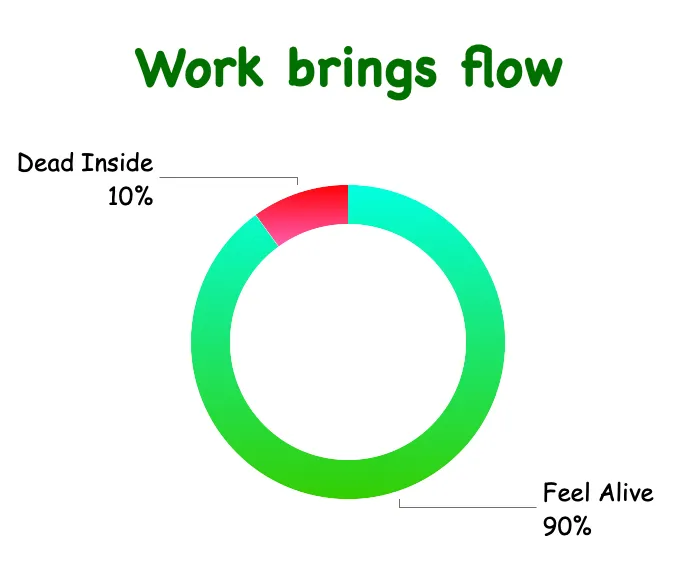
And this is what it feels like when work is a chore:
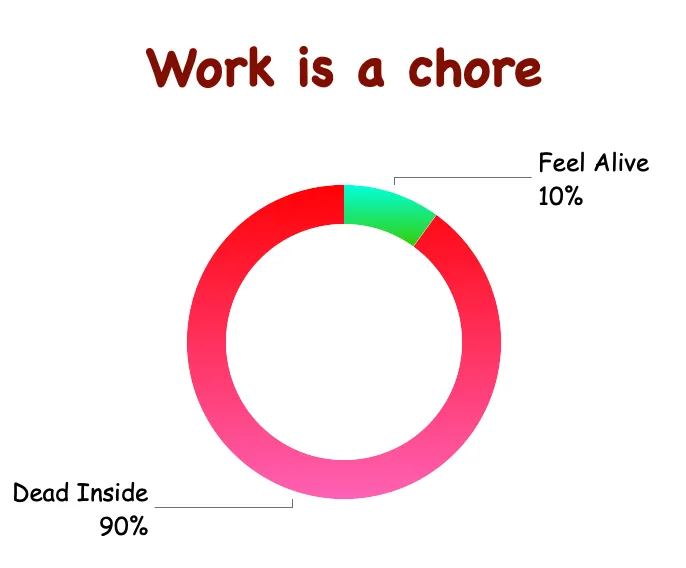
Earn money while solving the problem
Money is a reward for the value you create and capture. Solving problems for others provides them with value. The bigger the problem you solve, the more purpose and money you can achieve.
Resources
Pursuing curiosity is an obvious choice for me. Even with unlimited funds, constant travel would eventually lose its appeal. True freedom, to me, is having the choice to work on problems that ignite my curiosity. By pursuing this kind of freedom, rather than playing status games or living passively, I minimise regret.
If you also choose curiosity as your path, I’ve included questions, resources, and comments below that I’ve found helpful.
Discover your curiosity
The best way to find out if you’re curious is to try new things.
Ask yourself these questions if you have not discovered your curiosity:
- Would you still work on this problem if you had all the money in the world?
- Does solving the problem feel like play while others find it tedious work?
- How much pain are you willing to endure to satiate your curiosity?
If you don’t have clear answers, go in explore mode and try as many new things as possible. Follow your heart in choosing what to explore. Even if it’s collecting rare stamps for a bit.
Overcoming fear with desire
- Is it hell yes or no?
- Know that life is short and visualise your life in weeks
- Do you want to spend life living in discontent
- Book recommendation to overcome fears
- Book recommendation to overcome the fear of judgement
Balancing curiosity with money
Many folks have said it’s a a bad idea to quit your job to start a startup without funds. Here, here, and here are some examples.
If your desire is big enough, you can pursue curiosity even while working a dead-end job.
When I had a full-time job, I spent my nights, weekends and holidays learning to code. I looked forward to my annual leave the most because I could code all day. Pursuing curiosity gave me meaning when I lost motivation at my job.
It’s your turn
Understand your current step on the career ladder. If you’re at the Crossroads of Enough, decide which path you’ll take and don’t let fear hold you back. If you choose to pursue curiosity, apply filters to find a meaningful problem to solve.
Wisdom lies in understanding the long-term consequences of your actions. So, choose wisely and make the most of your life.